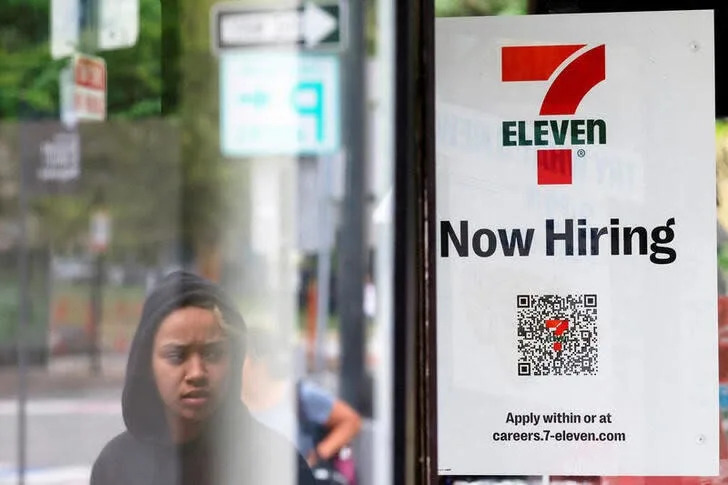WASHINGTON, Sept 1 – The number of Americans filing new claims for jobless benefits fell to a two-month low last week and layoffs fell in August, suggesting the Federal Reserve may need to continue raising aggressive interest rates to slow down the labor market.
The Labor Department’s weekly jobless claims report on Thursday, the most timely data on the health of the economy, also showed fewer people filed for benefits in the previous week than initially estimated.
The strong demand for workers was reinforced by a survey from the Institute of Management and Supply (ISM) on Thursday that showed a strong rebound in manufacturing employment in August after three consecutive months of contraction.
The ISM survey found that “companies continued to hire at strong rates in August, with little sign of layoffs, hiring freezes or attrition reductions.”
The Fed has been making sharp rate hikes to rein in inflation by curbing demand in the wider economy.
“Employers are still in a mad scramble to fill vacancies and are likely to keep staffing despite declining demand,” said Matt Colyar, an economist at Moody’s Analytics in West Chester, Pennsylvania. “Last year’s experience, an extremely competitive job market and a fast economic cycle, make companies reluctant to lay off workers.”
Initial claims for state jobless benefits fell 5,000 to 232,000 seasonally adjusted for the week ending Aug. 27, the lowest since late June. The previous week’s data was revised to show that 6,000 fewer applications were submitted than reported. Economists polled by GLM had forecast 248,000 claims for the latest week.
The number of people receiving aid after an initial week, a gauge of hiring, rose by 26,000 to 1.438 million in the week to Aug. 20.
The Fed’s aggressive rate hikes have increased the risk of a recession. The Fed has raised its policy rate by 225 basis points since March. So far, there is little sign that higher borrowing costs are cooling demand for labor.
The government reported this week that there were 11.2 million job offers at the end of July, with two vacancies for every unemployed person. The resilience of the labor market continues to allay fears that the economy is in recession after Gross Domestic Product contracted in the first half of the year.
Signs that the economy is still growing were reinforced by the ISM survey, whose manufacturing PMI was unchanged at 52.8 last month. A reading above 50 indicates an expansion in manufacturing, which accounts for 11.9% of the US economy.
Five of the six largest manufacturing industries, which include machinery, transportation equipment, and computer and electronic products, posted moderate to strong growth. Computer and electronics makers said “customer demand remains strong.” Transportation equipment manufacturers said “strong sales continue.”
While there were signs supply bottlenecks were easing, helping reduce inflationary pressures at the factory gate, shortages persisted for machine builders.
LOW LEVEL OF LAYOFFS
The claims data is unrelated to the August employment report, due Friday, as it was not in the survey week. According to a GLM survey of economists, jobs grew by 300,000 last month after rising by 528,000 in July. Although job growth is slowing, labor market conditions remain tight.
A separate report from global relocation firm Challenger, Gray & Christmas showed on Thursday that employer-announced job cuts in the country fell 21% to 20,485 in August. Although layoffs were up 30% from a year earlier, they were down 27% in the first eight months of the year compared to the same period in 2021.
The tech industry accounted for almost a quarter of the job cuts announced in August. Companies in the sector have announced 14,408 layoffs so far this year, a 70% increase over the same period in 2021. Overall, employers announced plans to hire 41,985 workers, 65% more than in July.
Another Labor Department report showed nonfarm productivity fell at an annualized rate of 4.1% last quarter, revised upward from the 4.6% pace of contraction reported earlier last month. It plunged at a rate of 7.4% in the first quarter.
Productivity fell at a 2.4% rate from a year earlier, instead of the 2.5% pace estimated last month. It was still the biggest year-over-year decline since the government began tracking the series in the first quarter of 1948.
“The extent of the drop in productivity seems implausible to us,” said Conrad DeQuadros, chief economic adviser at Brean Capital in New York. “If productivity is not growing, this represents serious cost pressures for corporations. This is not an encouraging picture for a return to 2% inflation in a timely manner.”

